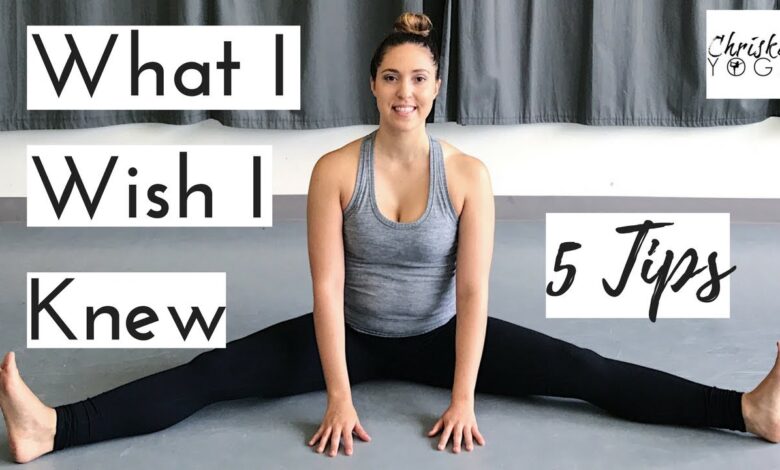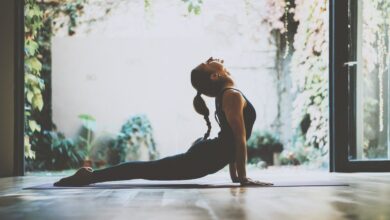Yoga Tips: How to Build a Stronger Practice and Find Inner Balance

Have you ever stepped onto a yoga mat, stretched into a pose, and thought, am I even doing this right? If so, you’re not alone. Yoga looks graceful and effortless when practiced by experienced yogis, but for beginners and even intermediate practitioners, it can feel confusing. From holding postures to breathing properly, every detail matters. That’s why having the right yoga tips can transform your practice, making it more enjoyable and beneficial.
Yoga isn’t about touching your toes or balancing perfectly on one leg. It’s about connecting the mind, body, and breath. Whether you’re just starting or looking to deepen your practice, the right guidance can help you avoid frustration, prevent injuries, and enjoy every session. In this article, we’ll dive into practical yoga tips for beginners and seasoned practitioners alike, covering posture, breathing, mindset, and lifestyle.
Start With an Open Mind
When many people think of yoga, they imagine advanced poses or social media-worthy handstands. But yoga is much more than flexibility and impressive shapes. It’s a journey of self-awareness and growth.
One of the best yoga tips for anyone starting out is to let go of comparison. You don’t need to match the person on the mat next to you or imitate a picture-perfect pose online. Instead, focus on how your body feels. Yoga is deeply personal, and progress looks different for everyone.
Invest in the Right Gear
You don’t need a lot of fancy equipment to practice yoga, but a few basics can make a huge difference.
- Yoga Mat: Choose a non-slip mat with enough cushioning to protect your joints.
- Blocks: Perfect for support when flexibility is limited.
- Strap: Helps you stretch deeper without straining.
- Comfortable Clothing: Opt for breathable, stretchy fabrics that allow free movement.
The right gear removes distractions and helps you feel safe and supported during practice.
Focus on Your Breath
One of the most important yoga tips is this: your breath guides your practice. The connection between breath and movement is what makes yoga different from regular stretching.
When you inhale, think about expanding and lengthening. When you exhale, allow yourself to sink deeper into poses. Learning to control your breath not only calms your mind but also improves endurance and focus.
If you ever feel lost in class, return to your breath—it anchors you to the present moment.
Warm Up Before Diving Into Poses
Jumping straight into challenging postures is one of the quickest ways to get injured. A gentle warm-up prepares your muscles and joints. Start with movements like neck rolls, shoulder shrugs, cat-cow stretches, or seated twists.
These small motions loosen tight areas and awaken your body, making the rest of your session smoother and safer. Think of warming up as setting the tone—it helps you transition from the outside world into a mindful practice.
Take It Slow With Beginners’ Poses
If you’re new, don’t feel pressured to attempt advanced asanas. Mastering foundational poses builds strength, balance, and confidence.
Some great beginner-friendly poses include:
- Mountain Pose (Tadasana): Teaches posture and alignment.
- Child’s Pose (Balasana): A resting pose that encourages relaxation.
- Downward Dog (Adho Mukha Svanasana): Strengthens arms and stretches the back.
- Warrior I & II (Virabhadrasana): Improves stability and focus.
By starting with basics, you give your body time to adapt while building a strong foundation for more complex movements later.
Don’t Force Flexibility
Many beginners believe yoga is only for the naturally flexible, but that’s far from true. Flexibility improves with consistent practice, not overnight. Trying to push too hard can lead to muscle strain.
Instead of forcing your body, respect your limits. Use props, bend your knees if needed, and take modifications offered by instructors. Progress comes gradually, and with time, you’ll notice your body opening up.
Balance Strength and Stretching
Yoga isn’t just about stretching—it’s also about building strength. Holding poses like plank, chair, or warrior strengthens muscles while improving endurance. This balance between flexibility and strength protects your joints and improves overall health.
If you only focus on stretching, you may lack the stability needed for advanced poses. By combining both, you create a well-rounded practice.
Pay Attention to Alignment
Good alignment is one of the most valuable yoga tips. Proper alignment prevents injury and ensures you’re activating the right muscles.
For example, in downward dog, your hands should press evenly into the mat, shoulders away from ears, and heels gently moving toward the ground. Small details make a big difference in both safety and effectiveness.
If you’re unsure, practice near a mirror or ask for guidance in class. Over time, your body will learn what correct alignment feels like.
Use Props Without Shame
Some people think using blocks, straps, or bolsters means they’re not “good” at yoga. In reality, props make yoga more accessible and enjoyable.
Blocks can bring the ground closer to you in standing poses. Straps help you hold stretches without straining. Bolsters support relaxation in restorative yoga. Far from being a crutch, props are tools that enhance your experience and deepen your practice.
Listen to Your Body
One of the golden rules of yoga is to always listen to your body. If something feels painful, back off. Discomfort is natural when stretching tight muscles, but sharp or stabbing pain signals something’s wrong.
Learning the difference between “good discomfort” and “bad pain” helps you grow safely. Remember, yoga should never hurt—it should feel supportive, challenging, and nourishing.
Practice Consistently
Consistency matters more than perfection. Practicing for 15 minutes three times a week is often more beneficial than one intense two-hour session. The key is showing up regularly.
Even on busy days, a short flow or some mindful breathing counts as yoga. Over time, consistent practice creates long-term improvements in strength, flexibility, and mental clarity.
Create a Calming Space
Having a dedicated space for yoga makes practice easier. Choose a quiet corner of your home, roll out your mat, and keep props nearby. You don’t need a large room—just enough space to stretch comfortably.
Adding elements like soft lighting, plants, or calming music can make your space more inviting. When your environment feels peaceful, it’s easier to focus inward.
Practice Mindfulness Off the Mat
Yoga isn’t just physical exercise—it’s a lifestyle. Taking lessons from the mat into daily life is one of the most transformative yoga tips.
Practice patience in stressful moments, breathe deeply during challenges, and bring mindfulness into everyday tasks. Whether it’s eating slowly, walking with awareness, or pausing before reacting, yoga teaches presence beyond poses.
Hydration and Nutrition Support Your Practice
Your body performs better when fueled properly. Drink water before and after yoga, especially if you’re doing a heated class. Eating light meals before practice helps you move comfortably without feeling sluggish.
Opt for nutrient-rich foods that give sustained energy—fruits, vegetables, lean proteins, and whole grains all support recovery and endurance.
Don’t Skip Relaxation
Every yoga session typically ends with Savasana (corpse pose), where you lie down and rest. Some people view it as optional, but it’s one of the most important parts of practice.
Relaxation allows your body to absorb the benefits of the poses and gives your mind a chance to reset. It’s a time to let go of tension and simply be present. Skipping it means missing a vital part of yoga’s healing process.
Seek Guidance When Needed
While practicing at home is convenient, joining classes or watching guided videos can help you learn proper form. Instructors provide tips, adjustments, and modifications you might not think of on your own.
If you can, attend at least a few classes to build confidence. Then, mix in home practice to keep things flexible. This balance gives you the best of both worlds—structure and freedom.
Advanced Yoga Tips for Growing Practitioners
Once you’ve built a foundation, you may feel ready to explore more challenging aspects of yoga. Here are tips for advancing safely:
- Practice balance poses like crow or headstand against a wall first.
- Focus on transitions between poses, not just the poses themselves.
- Explore different styles such as Vinyasa, Ashtanga, or Yin for variety.
- Add breathwork practices like alternate nostril breathing (Nadi Shodhana).
Advancement is not about performing the hardest pose—it’s about deepening your connection with body and mind.
The Mental Side of Yoga
While yoga strengthens muscles, its greatest gift may be mental clarity. Practicing regularly reduces stress, improves focus, and builds resilience.
One of the simplest yoga tips for mental calmness is to breathe slowly and notice your thoughts without judgment. Over time, this creates space between your thoughts and reactions, giving you more control in daily life.
Final Thoughts: Your Journey Is Unique
At the heart of all yoga tips lies one truth: your journey is your own. You don’t need to look like anyone else on the mat. Progress comes from patience, consistency, and self-compassion.
Whether you’re starting with basic poses or exploring advanced postures, yoga offers something for everyone. With the right tips, you’ll not only improve physically but also find greater peace and balance in daily life.
So, roll out your mat, take a deep breath, and begin where you are. Every step counts, and every practice brings you closer to a stronger, calmer version of yourself.



